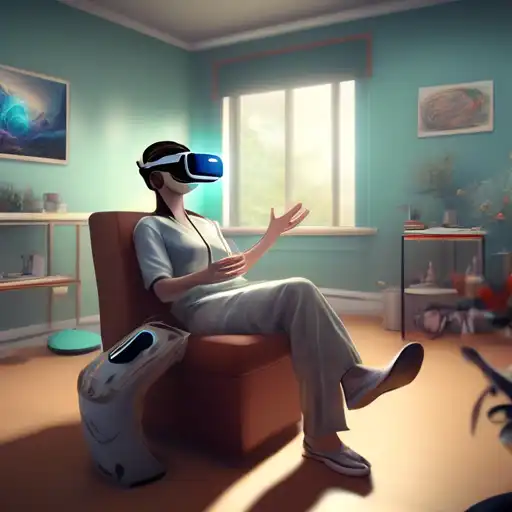The Transformative Role of Virtual Reality in Therapeutic Practices
Virtual Reality (VR) technology has transcended its initial entertainment purposes, emerging as a groundbreaking tool in the field of therapy. By creating immersive, controlled environments, VR offers unique opportunities for treating a variety of psychological and physical conditions. This article explores the innovative ways VR is being utilized in therapeutic settings, highlighting its benefits and potential for future applications.
Understanding VR Therapy
VR therapy involves the use of virtual reality technology to simulate environments where patients can confront and work through their issues under the guidance of a therapist. This method has proven particularly effective in treating phobias, PTSD, anxiety disorders, and even physical rehabilitation. The controlled nature of VR allows for a safe space where patients can face their fears without real-world risks.
Applications of VR in Therapy
The applications of VR in therapy are vast and varied. Below are some of the most notable uses:
- Exposure Therapy: VR is extensively used in exposure therapy, helping patients gradually confront their fears in a controlled environment.
- Pain Management: Studies have shown that VR can significantly reduce pain perception during medical procedures or chronic pain management.
- Physical Rehabilitation: VR games and simulations are being used to motivate patients during physical therapy, making exercises more engaging.
- Social Skills Training: Individuals with autism or social anxiety can benefit from VR scenarios designed to improve communication and social interaction skills.
Benefits of VR Therapy
VR therapy offers several advantages over traditional therapeutic methods. These include:
- Accessibility: Patients can receive therapy from the comfort of their homes, making it more accessible to those with mobility issues or living in remote areas.
- Customizability: Therapists can tailor the virtual environment to meet the specific needs of each patient, enhancing the therapy's effectiveness.
- Engagement: The immersive nature of VR makes therapy sessions more engaging and less intimidating for patients, potentially improving outcomes.
Challenges and Considerations
Despite its potential, VR therapy is not without challenges. The cost of VR equipment and the need for technical expertise can be barriers to widespread adoption. Additionally, more research is needed to fully understand the long-term effects of VR therapy and to establish standardized protocols.
The Future of VR in Therapy
As VR technology continues to evolve, its applications in therapy are expected to expand. Innovations such as augmented reality (AR) and mixed reality (MR) are beginning to be explored for therapeutic purposes, offering even more possibilities for patient care. With ongoing research and development, VR has the potential to revolutionize the field of therapy, making treatments more effective, accessible, and engaging for patients worldwide.
For those interested in exploring more about the intersection of technology and mental health, check out our article on The Impact of Technology on Mental Health.
